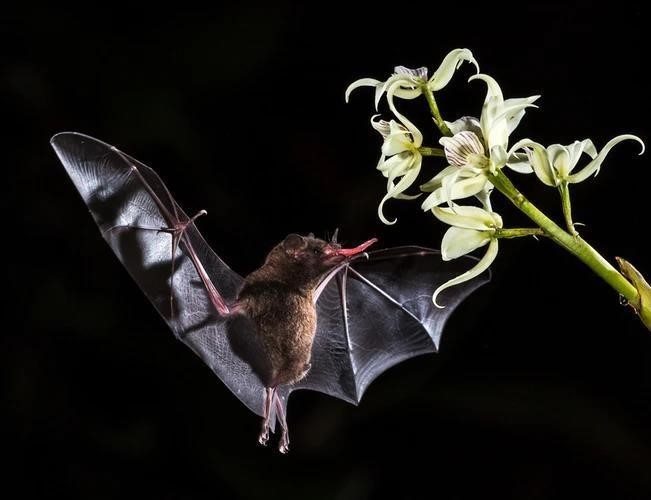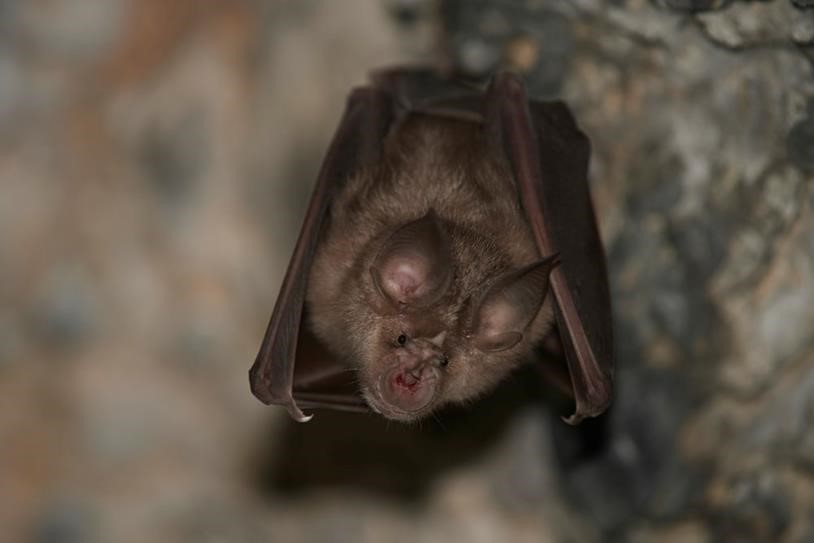
A Tale as Old as Time: Bats, Humans & Modern-Day Infectious Diseases
It has been approximately 50 million years since bats first began flying through our night skies, eventually becoming one of the most infamous and revered nocturnally evolved creatures in history. Humans, on the other hand, began their evolutionary journey approximately 300,000 years ago and have maintained both curious and necessary relationships with these creatures of the night.
What has potentially sparked our ancient to modern-day curiosity with bats?
What has sparked our curiosity about bats? As forementioned, bats are dusk to dawn creatures, whereas most humans are active from dawn to dusk, this is largely due to their need to hunt and find food sources, like insects (e.g., mosquitoes, crickets, beetles, moths, etc.), the blood of mammals that is usually found in livestock (e.g., cows, pigs, sheep, chickens, etc.), which only occurs among the vampire species of bats, but also a wide variety of fruits (e.g., bananas, mangoes, avocados, figs, etc.), as well as nectar and pollen. There are over 1,700 species of bats worldwide, and it is estimated that 70% of all bat species rely on insects as their main dietary source of nutrition (U.S. Department of Interior, 2017). In addition to their nocturnal and dietary regimens, bats peculiar living spaces have given them a further cause for curiosity, as they can be found living in trees, caves, mines, talus slopes, rock crevices, and even in suburban areas such as garages and attics (National Park Service, 2016). Moreover, where they live and how they rest (in an inverted manner) has given many onlookers throughout history great pause. Inciting folklore of their relationship to death, dying, and other ethereal omens, which are well known in cultures such as Russian and Slavic. Although their manner of living has more to do with staying in places that provide protection from predatory enemies, shelter during the day while allowing their colonies to thrive. In fact, some bat colonies can have millions of members, even as much as 20 million (Library of Congress, 2019). Carlsbad Caverns in New Mexico once housed one of the largest bat colonies in the United States, approximately 7-8 million, but now the colony houses approximately 1 million (Library of Congress, 2019).

However, their manner of living is not the only reason they had a perceived relationship to death and dying in folklore, as they can transmit a variety of infectious viral and bacterial diseases, like salmonella, histoplasmosis, leptospirosis, Hendra virus, Ebola virus, and severe acute respiratory syndrome (SARS) that is the name of the respiratory illness that is caused by SARS-CoV. In a 2020 interview of assistant professor of Russian and Slavic studies, Colleen Lucey, Ph.D., about the relationship between vampire folklore and outbreaks of diseases, she stated that in Slavic folklore vampires were believed to bring impending hardship and distress to a community (Lucey, 2020). Dr. Lucey further stated that vampires reportedly appeared as attractive, friendly, and mysterious outsiders that are later revealed to be predators that attack unassuming victims (Lucey, 2020). The moral of the story in this folklore tale is to always be wary of outsiders or those you don’t know; Dr. Lucey argues that this demonstrates the psychological function of the vampire to act as a scapegoat for public health crises, like outbreaks of disease, as when members of communities begin dying and the cause isn’t clear, vampires or other outside entities appear as the cause of disease and death (Lucey, 2020). Altogether, Dr. Lucey’s argument brings an eerie (yet, well-known) sense of irony in today’s current aversion towards foreign diseases, and individuals who have perceived ties to foreign nations of novel infectious diseases. This is specifically noticeable among people of Asian and Pacific Islander descent in the U.S., who have been the subject of rising COVID-19 related hate crimes that have resulted in physical assaults, verbal harassment, workplace shunning or refusal of services, shunning, and even coughing/spitting attacks (Cabral, 2020).
Is there a definite link between SARS-CoV-2 and wild bats?
Similarly, in today’s current times, wild bats (specifically, lesser horseshoe bats) are consistently in the headlines for being linked to SARS-CoV-2. This pneumonic disease is the 7th Coronavirus that has successfully infected and caused an outbreak in humans (Low et al., 2021). SARS-CoV is a zoonotic disease, speculated to originate in bats, pangolins, and camels, found in the Middle East Respiratory Syndrome CoV (MERS-CoV) and SARS-CoV-2, which have both resulted in major outbreaks in the past two decades (Low et al., 2021). A recent (2021) study led and published by scientists from Duke-National University of Singapore Medical School and Chulalongkorn University in Thailand, it found that SARS-CoV-2-related coronaviruses (SC2r-CoVs) were also found in animals in Thailand (Wacharapluesadee, et. al., 2021). The study, published in Nature Communications, reported high levels of neutralizing antibodies against the virus that was present in bat sand pangolins found in the region. As Southeast Asia has a large and diverse bat population it is more likely to be a hotspot for such viruses (Wacharapluesadee et. al., 2021).
How do wild bats commonly spread viral diseases, like SARS-CoV-2?
How exactly do bats spread these kinds of viral diseases, particularly, diseases that lead to pandemics, like SARS-CoV-2? The World Health Organization (WHO) reported that a large proportion of the initial cases in late December 2019 and early January 2020 had a direct link to the Huanan Wholesale Seafood Market in Wuhan City, China where items such as seafood, wild animals (e.g., bats, pangolins, snakes, civets, etc.), and farmed animal species were sold (WHO, 2020). The first set of infected patients with SARS-CoV-2 were stall owners, market employees, or regular customers (WHO, 2020). During a disease investigation of this market, the WHO reported that environmental samples taken from it in December 2019 tested positive for SARS-CoV-2, which suggested that the market in Wuhan City was the original source of this outbreak or played a significant role in the initial spread of the outbreak (WHO, 2020). On January 1, 2020, the market was closed for cleaning and disinfection (WHO, 2020). However, the WHO reported that the virus may have been introduced into the human population from an animal source in the market or an infected human may have introduced the virus to the market, allowing the virus to be quickly transmitted in the market environment (WHO, 2020).
Unfortunately, the true origin of SARS-CoV-2 remains unknown, as early investigations into the first human cases have determined that they had onset of symptoms around December 2019, but these cases had no direct link to the Huanan Wholesale Seafood Market and may have been infected in November through contact with earlier undetected cases (WHO, 2020).

A potential predecessor to SARS-CoV-2
In June 2012, a similar SARS-CoV-2 related illness was reported in the Mojiang Hani Autonomous County, Yunnan Province, China, among 6 miners who had severe pneumonia without a known cause after working in an abandoned mine (Wu et. al., 2014). 3 of the affected miners later died because of pneumonia-related complications (Wu et. al., 2014). Upon the miners’ admission to Kunming Medical University, their physicians informed the local medical officer of a potential epidemic outbreak (Latham & Wilson, 2020). The miners were treated for their symptoms upon admission, including (but not limited to) a dry cough, high fever, difficulty breathing, headaches, and myalgia (Latham & Wilson, 2020). The source of the infection was later determined to be Rhinolophus sinicus, a Chinese rufous horseshoe bat (1 of 100 species of large-eared insect-eating bats), however, the miners have infected with a coronavirus but not SARS (more than likely from prolonged exposure to a sizable colony of bats as well as their feces). Nonetheless, these miners’ cases bring about a possible connection to the origin of SARS-CoV-2, 7 years prior to the first set of cases reported in December 2019.
How do bats effectively spread infectious diseases to humans?
Typically, there are 3 ways in which bats can effectively spread infectious diseases to humans, feces (also known as guano), urine (sometimes with a combination of both feces and urine), and saliva. However, bat feces can present more of a compelling problem for those who work among their habitats, such as in the case of the Mojiang Hani Autonomous County miners because it is a reservoir for viruses (Xie, 2020). People who work or spend prolonged periods among bat colonies (more specifically, large bat colonies) have increased rates for acquiring infectious diseases, mostly due to spending time with them, like when workers collect bat feces or guano from caves, or when miners spend numerous hours breathing in the same confined space(s) as a bat colony (Xie, 2020). Although it is also possible for bats to transmit diseases by a combination of saliva and/or blood, it is less likely as most bats do not bite humans, especially the species of horseshoe bats that are linked to SARS-CoV-2 (Xie, 2020). Guano is not only problematic for workers who spend prolonged periods among bat colonies, but also consumers as it is highly valued and used from anything such as plant fertilizer to traditional Chinese medicine for the improvement of night vision (as bats are active as night, some healers believe their excrement may improve human’s vision during the darker hours), treating blood stasis, and embolisms (Xie, 2020).
Bats’ have rare, strong immune defenses amongst other mammals
Why do bats have a high level of immunity and limited susceptibility to becoming symptomatic for many infectious diseases? Bats are known to carry infectious diseases, like viruses that are deadly to other mammals (including humans) without themselves showing serious symptoms (Brook et. al., 2020). As previously discussed, bats are natural reservoirs for viruses that have some of the highest fatality rates of any viruses that people acquire from wild animals, including rabies, Ebola, and SARS-CoV-2 (Brook et. al., 2020). A reason for their effective immune system may be due to the highly adapted anti-inflammatory traits that protect them from serious health complications (Brook et. al., 2020). In a 2020 study using bat cells grown in a laboratory, from the flying fox and Egyptian fruit bat species, it found that to combat a bat’s immune defenses viruses have become better at spreading rapidly from cell to cell (Garcia de Jesús, 2020). Henceforth, when other mammals without a similar strong immune system encounter the same viruses carried by bats, they experience high virulence because of their adaptation to living within bats’ immune systems (Garcia de Jesús, 2020). Since bats have a strong and well-adapted immune system for many viruses, viruses may evolve to infect new cells much faster than it normally would in a different environment or mammal (Garcia de Jesús, 2020).

The effects of global tourism on the transmission of infectious diseases
It is predicted that by the year 2030, the number of global tourists will have increased to 1.8 billion (United Nations, 2017). According to the former Secretary-General of the United Nations World Travel Organization, Taleb Rifai, global tourism is a phenomenon that is making the world a smaller and more connected place (United Nations, 2017). However, this increased connectedness can sometimes play a major role in the global spread of disease, as transportation facilitates the range of movement and the spatial diversity of infected and exposed individuals by placing them among people who do not live near each other (Meitiv et. al., 2020). Undoubtedly, public transportation increases the transmission rates of infectious diseases by placing people into prolonged contact among others within confined, close environments, henceforth transportation vehicles (or other modes of transportation, like aircraft, motor vehicles, trains, ocean liners, etc.) and infrastructure can often become carriers of diseases that facilitate indirect transmissions of pathogens (Meitiv et. al., 2020). Subsequently, the likelihood of individuals being exposed and infected by pathogens while traveling primarily depends on the following factors: the number of persons that an individual comes into contact within a specific period, how an individual interacts with other persons who may be exposed, and/or infected by pathogens, duration from a person’s infection onset to peak infectivity, duration from other person’s infection onset to recovery, the time scale for exponential decay of the mode of transportation’s infectivity, the frequency of cleaning and disinfection that occurs among various modes of transportation, and how many persons are traveling in a specific mode of transportation (Meitiv et. al., 2020). In the case of SARS-CoV-2 in the U.S., aircraft were likely the initial carriers of infected passengers who had recently visited China between January 2020 to February 2020, when public health agencies first detected (14) U.S. cases, but it is also the most likely carrier of other first reported cases of infection among multiple countries (CDC, 2020).
Our Relationships with Bats: An Integral Ecological Partnership
Bats play an integral ecological role, they are found on all continents with the exception of Antarctica, and they are essential to an array of ecosystems, ranging from rain forests to deserts (Whiteman, 2012). Despite the infectious diseases that they can sometimes spread to humans, bats ecological role in pollinating and dispersing the seeds of hundreds of species of plants, make them key pollinators for various types of plants, like cacti that open their flowers only at night when bats are active (Whiteman, 2012). Many species of bats also eat copious amounts of insects and other arthropods, often consuming the equivalent of their own body weight (Whiteman, 2012). It is estimated that the value of bats to the agricultural industry is roughly $22.9 billion annually, included within these estimates are reduced costs of pesticide applications that are no longer needed to repel insects consumed by bats, but these estimates do not include downstream effects of pesticides on ecosystems, such as secondary effects of predation that reduce the potential for evolved resistance of insects to pesticides and genetically modified crops (Boyles et. al., 2011). Not to mention, bats have offered numerous benefits to the field of biomimetics, the science of modeling advanced technologies based on natural forms (Whiteman, 2012). Some of these benefits include the development of ship sonar systems and ultrasound equipment, which have been highly beneficial to the fields of military and medical technologies (Whiteman, 2012). Evidently, there is little doubt of how bats offer us a more advantageous partnership than not. However, with the continued rise in global transportation and viral outbreaks, it has become an imminent necessity to better understand and respect their habitats. These curious creatures of the night have been adapting and continue to adapt their ways into our lives, long before our evolution journey even began.
References
Book C. E., Boots, M., Chandran, K., Dobson, A. P., Drosten, C., Graham, A. L., Grefell, B. T., Müller, M. A., Ng, M., Wang, Lin-Fa & van Leeuwen, A. (2020). Accelerated viral dynamics in bat cell lines, with implications for zoonotic emergence. eLife, 31(793). DOI:10.7554/eLife.48401
Bouillard, N. (2021). [Picture of a greater horseshoe bat]. [Photograph].
https://unsplash.com/photos/QLDqJV5CEWY
Cabral, S. (2020). Covid ‘hate crimes’ against Asian Americans on rise. https://www.bbc.com/news/world-us-canada-56218684
CDC. (2020). Evidence for limited early spread of COVID-19 within the United States, January– February 2020. https://www.cdc.gov/mmwr/volumes/69/wr/mm6922e1.htm
Choi, S. (2017). [Photo of an airplane aisle during flight]. [Photograph]. https://unsplash.com/photos/tTfDMaRq-FE
Garcia de Jesús, E. (2020). Bats’ immune defenses may be why their viruses can be so deadly to people. https://science.sciencemag.org/content/332/6025/41.full
Latham, J. & Wilson, A. (2020). A proposed origin for SARS-CoV-2 and the COVID-19 pandemic. https://www.independentsciencenews.org/commentaries/a-proposed-originfor-sarscov-2-and-the-covid-19-pandemic/
Library of Congress. (2019). Why do bats live in caves? Why don’t they fly into objects at night? https://www.loc.gov/everyday-mysteries/item/why-do-bats-live-in-caves-why-dont-theyfly-intoobjects-at-night/
Low, Z. Y., Yip, A., Sharma, A., & Lal, S. K. (2021). SARS coronavirus outbreaks past and present-a comparative analysis of SARS-CoV-2 and its predecessors. Virus genes, 57(4), 307–317. https://doi.org/10.1007/s11262-021-01846-9
Lucey, C. (2020). On vampires, bats & disease. https://russian.arizona.edu/news/vampires-bats-disease
Macháček, Z. (2019). [Picture of a little, yellow-shouldered bat in Costa Rica]. [Photograph].
https://unsplash.com/photos/hNz4Qh9ECCc
Meitiv, A., Sanchez, K., Zietsman, J., Ramani, T., Winfree, G. & Shipp, E. (2020).
Transportation as a disease vector-A modeling approach.
National Park Service. (2016). Where bats live. https://www.nps.gov/subjects/bats/wherebatslive.htm
Riegal, R. (2021). [Picture of a grey-headed flying fox in Victoria, Australia]. [Photograph].
https://unsplash.com/photos/qAts81pZrbg
United Nations. (2017). World could see 1.8 billion tourists by 2030 – UN agency.
https://news.un.org/en/story/2017/12/640512-world-could-see-18-billion-tourists-2030un-agenc
U.S. Department of the Interior. 13 Awesome facts about bats. https://www.doi.gov/blog/13facts-about-bats
Wacharapluesadee, S., Sintunawa, C., Kaewpom, T., Khongnomnan, K., Olival, K. J., Epstein, J. H., Rodpan, A., Sangsri, P., Intarut, N., Chindamporn, A., Suksawa, K., & Hemachudha, T.
(2013). Group C betacoronavirus in bat guano fertilizer, Thailand. Emerging infectious diseases,
19(8), 1349–1351. https://doi.org/10.3201/eid1908.130119
Whiteman, L. (2012). The night life: Why we need bats all the time-Not just on Halloween. https://www.nsf.gov/discoveries/disc_summ.jsp?cntn_id=125883
World Health Organization. (2020). Origin of SARS-CoV-2. https://apps.who.int/iris/bitstream/handle/10665/332197/WHO-2019-nCoV-FAQVirus_origin2020.1-eng.pdf
Wu, Z., Yang, L., Yang, F., Ren, X., Jiang, J., Dong, J., Sun, L., Zhu, Y., Zhou, H., & Jin, Q. (2014). Novel Henipa-like virus, Mojiang Paramyxovirus, in rats, China, 2012. Emerging infectious diseases, 20(6), 1064–1066. https://doi.org/10.3201/eid2006.131022
Boyles, J. G., Cryan, P.M., McCracken, G. F., Kunz, T. H. (2011). Economic Importance of Bats in Agriculture. Science Daily. 332 (6025): 41 DOI:10.1126/science.1201366
Xie, J. (2020). Did coronavirus come from the bat guano trade?
https://www.voanews.com/covid-19-pandemic/did-coronavirus-come-bat-guano-trade